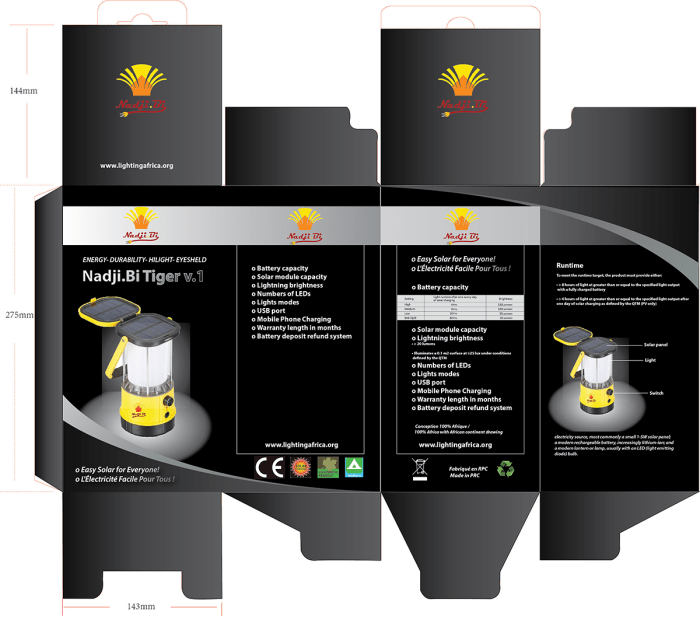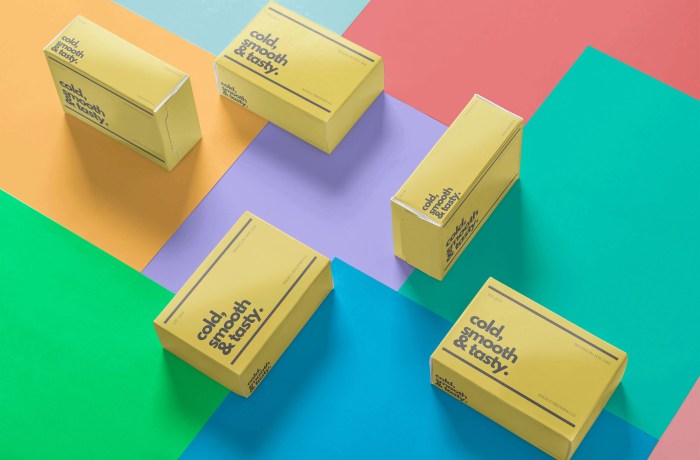Designing Product Packaging is not just about wrapping products – it’s an art form that captivates consumers with its visual appeal and storytelling. From the importance of branding to the impact of sustainable materials, this topic delves into the creative process behind effective packaging design.
Introduction to Product Packaging Design

Product packaging design plays a crucial role in branding and marketing strategies. It is the first thing customers see and can greatly impact their purchasing decisions. Effective packaging design can attract consumers, communicate brand values, and differentiate products from competitors.
Importance of Product Packaging
- Creates brand identity and recognition
- Protects the product during transit and storage
- Communicates product information and benefits
- Attracts target customers through visual appeal
Examples of Effective Packaging Designs
- Apple: Known for minimalist and sleek packaging design that reflects the brand’s premium image.
- Tiffany & Co.: Iconic blue box packaging that signifies luxury and elegance.
- Coca-Cola: Timeless logo and color scheme that instantly grabs attention on store shelves.
- Dove: Simple and clean packaging design that conveys a message of purity and gentleness.
Elements of Effective Packaging Design

When designing product packaging, several key elements need to be considered to ensure the packaging effectively communicates the brand message and attracts consumers. Elements such as typography, color, imagery, and shape play a crucial role in the overall design and impact of the packaging.
Typography
Typography refers to the style and arrangement of text on the packaging. It is essential to choose fonts that are easy to read and reflect the brand’s personality. The size, spacing, and alignment of text can also influence how consumers perceive the product.
Color
Color is a powerful tool in packaging design as it can evoke emotions and create associations with the brand. The choice of colors should align with the brand identity and target audience. Understanding color psychology can help in selecting the right colors to convey the desired message.
Imagery
Images and graphics on packaging can help tell a story about the product and create visual interest. High-quality photographs or illustrations can enhance the overall design and attract consumers’ attention. The imagery should be relevant to the product and resonate with the target market.
Shape
The shape of the packaging can impact not only the visual appeal but also the functionality and usability of the product. Unique shapes or innovative packaging designs can differentiate the product on the shelf and create a memorable experience for the consumer.
Sustainable Materials
The use of sustainable materials in packaging design has become increasingly important in today’s environmentally conscious market. Using eco-friendly materials not only reduces the environmental impact but also communicates the brand’s commitment to sustainability, appealing to eco-conscious consumers.
Impact of Size and Shape
Packaging size and shape can influence consumer perception in terms of product value, quality, and convenience. The size of the packaging can impact shelf space utilization and transportation costs, while the shape can affect how the product is displayed and handled by consumers.
Packaging Design Process: Designing Product Packaging
When it comes to creating a successful packaging design, there are several important steps involved in taking a concept from idea to production. Market research, target audience analysis, prototyping, and testing all play a crucial role in ensuring that the final packaging design meets the needs and expectations of both the brand and the consumers.
Market Research and Target Audience Analysis
Market research is essential in understanding the competitive landscape, consumer preferences, and trends in the market. By analyzing target audience demographics, behavior, and psychographics, designers can create packaging that resonates with the specific needs and desires of the intended consumers. This data-driven approach helps in making informed decisions about the design elements, messaging, and overall aesthetics of the packaging.
Prototyping and Testing, Designing Product Packaging
Prototyping involves creating physical or digital mock-ups of the packaging design to visualize how it will look and function in the real world. This step allows designers to identify any potential issues, make necessary adjustments, and ensure that the final product meets the required specifications. Testing the packaging with focus groups or through usability studies helps in gathering feedback and validating the design choices before mass production. This iterative process of prototyping and testing is crucial in refining the packaging design to achieve the desired impact on the target audience.
Trends in Product Packaging Design
In the ever-evolving world of product packaging design, there are several trends that are shaping the industry and captivating consumers. Let’s dive into some of the most prominent trends that are currently making waves.
Minimalist Packaging
Minimalist packaging has gained immense popularity in recent years, with brands opting for clean, simple designs that focus on essential information and sleek aesthetics. This trend not only appeals to the modern consumer’s preference for simplicity but also helps in reducing waste and environmental impact.
Eco-Friendly Packaging
With sustainability becoming a key concern for both brands and consumers, eco-friendly packaging has become a top trend in the industry. From biodegradable materials to reusable packaging options, brands are prioritizing environmentally friendly solutions to reduce their carbon footprint and appeal to eco-conscious consumers.
Interactive Packaging
Interactive packaging is another trend that is revolutionizing the way products are presented to consumers. From QR codes that unlock exclusive content to packaging that doubles as a game or interactive experience, brands are leveraging technology to create memorable and engaging packaging designs that enhance the overall product experience.
Role of Storytelling and Emotional Connections
In modern packaging design, storytelling and emotional connections play a crucial role in creating memorable brand experiences. By weaving narratives and emotions into packaging design, brands can establish a deeper connection with consumers and evoke powerful feelings that resonate long after the product is purchased.
Examples of Innovative Packaging Designs
Some standout examples of innovative packaging designs include:
– Coca-Cola’s “Share a Coke” campaign, where personalized labels created a sense of connection and personalization for consumers.
– Oreo’s limited-edition packaging designs that incorporate interactive elements like sound modules and pop-up features to engage consumers in a fun and playful way.
– Lush’s eco-friendly packaging made from recycled materials and biodegradable components, showcasing a commitment to sustainability while maintaining a visually appealing design aesthetic.
These examples demonstrate how brands are pushing the boundaries of traditional packaging design to create unique, engaging, and memorable experiences for consumers in today’s competitive market.
Importance of Graphic Design in Packaging
Graphic design plays a crucial role in creating visually appealing packaging that attracts consumers and communicates brand identity effectively. It involves the strategic use of typography, color theory, and imagery to enhance the overall look and feel of the packaging design.
Use of Typography
Typography in packaging design helps convey essential information such as product details, brand name, and benefits to consumers. Choosing the right font style, size, and placement can significantly impact the readability and overall aesthetic of the packaging.
Color Theory
Color plays a vital role in triggering emotions and influencing consumer behavior. Using the right color palette can evoke specific feelings and create a strong brand association. It is essential to consider color psychology and ensure that the colors used align with the brand’s message and target audience.
Imagery in Graphic Design
Images and graphics are powerful visual elements that can enhance the attractiveness of packaging design. High-quality images can showcase the product effectively and provide valuable information to consumers. It is crucial to select images that resonate with the brand identity and appeal to the target market.
Balancing Aesthetics with Information Hierarchy
When designing packaging, it is essential to strike a balance between aesthetics and information hierarchy. While the packaging needs to be visually appealing, it should also clearly communicate essential details about the product. Utilizing hierarchy techniques such as size, color, and placement of elements can help guide consumers’ eyes and prioritize information effectively.